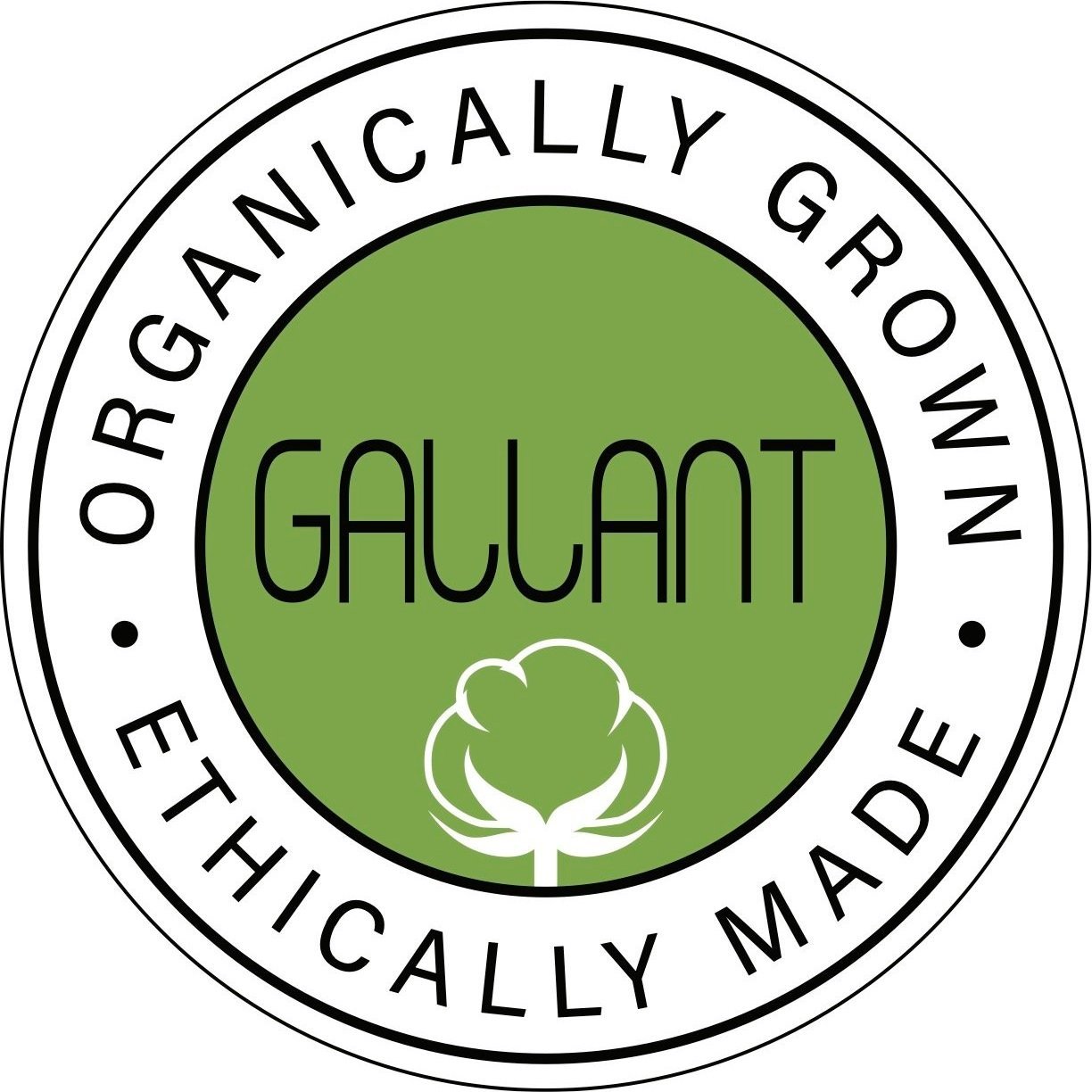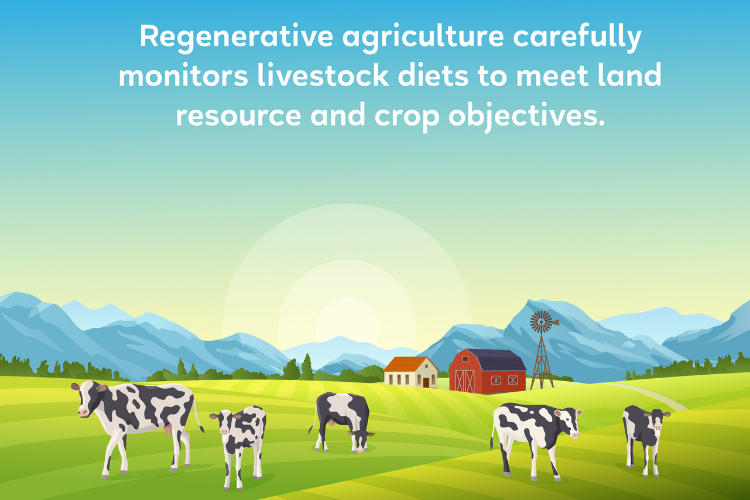What is Regenerative Agriculture? Introduction to Regenerative Agriculture
Regenerative agriculture is an intriguing environmental approach to agricultural production that allows the natural systems to renew themselves, a novel concept of uplifting the natural world rather than imposing an invasive control. It is rejuvenating farming methods that are less harmful to the land and the environment than the industrial agricultural systems.
By giving back to nature more than what we take, we are bringing nature closer to us and bringing ourselves closer to nature. Farming in balance with nature and the community empowers a sense of unity and integrity that reinforces the bond between the two. It's pretty simple— the notion of harmonious farming around exercising agricultural practices and cropping systems that enhances soil fertility, putting nutrients back to the soil, increasing soil water retention, eliminating carbon dioxide from the atmosphere, and, most notably, acclimating to the ecosystems in which they're grown.
Regenerative agriculture, by definition, is the method that is protective of the landscape. Meaning it aims to preserve the natural resources of the planet. By practice, it is an ecological farming method that allows landscapes to regenerate— a progressive concept that focuses on facilitating rather than conquering.
Some examples of regenerative agriculture include:
permaculture
crop growth with biological inputs on native grasslands
forest management
integrating livestock
food forestry
holistic grazing
biodynamics
diverse rotations
cover crop
These methods aim to enrich the soil by creating a self-sustaining ecosystem that contributes to the economy--- a farming system that reduces and reverses environmental effects.
We learn from regenerative agriculture that the planet is bountiful, immeasurably multifaceted, and splendidly interlinked. The interdependent apparatus prevails that if one mechanism is damaged, it affects the others as well, and if you replenish one, you replenish all. Meaning, the health status of a system is determined by the well-being of all of its participants. And it is this same process that is responsible for our better tomorrow.
Regenerative agricultural practices strive to achieve the well-being of our ecosystem by boosting soil health, water resources, soil organic carbon sequestration, and biological diversity.
Regenerative farming is a framework of agricultural principles that can reduce the harmful impact of industrial agribusiness. It controls the quantity of cultivable topsoil, resulting in a healthful food supply chain. One of the primary goals of regenerative agriculture is to reduce tilling for promoting healthy soil. It does not involve using synthetic fertilizers because it disrupts the natural phenomena of nutrient absorption by the plants and creates disequilibrium of soil microorganisms.
Traditional grazing causes carbon emissions, nitrogen depletion, water contamination, etc. Regenerative agriculture embraces sustainable grazing patterns of livestock by emulating natural grazing patterns. This ensures that rangeland has enough time to recover between grazing periods.
Cover crops/ crop rotation protects the soil and promote biodiversity-- Switching to crop rotation overgrowing one crop in the ground, season after season, can significantly increase the soil's organic carbon and boost the biological functions of the soil. Crop rotation becomes more than just restoring the soil health— you also get more agricultural output, grow incredible food, and a chance to get the land an organic certification (resulting in premium price of the crops).
Speaking of certification, the Regenerative Organic Alliance (ROA) is a move in the right direction to help restore the planet. Certification labels do not mean an immediate elimination of global problems. But it's a demonstration of commitment, dedication, and effort to keep progressing. It reflects the enthusiasm to keep adapting and evolving not only for our gain, but also for the environment and the societies— living not just for the sake of being alive, but living in a way that improves lives and the planet.
Regenerative Organic Certified® (ROC™)
Regenerative Organic Certified™ was established in 2017 by a group of farmers, business leaders, and experts in soil health, animal welfare, and social fairness collectively called the Regenerative Organic Alliance or ROA.
According to ROA, "ROC covers requirements for farming and ranching operations, transportation, slaughter, and certain processing facilities. Operations may be of any size. ROC seeks to create change across a wide variety of farms & ranches in order to scale best practices to the widest audience possible."
The goal of ROC is to promote holistic agriculture practices in an all-encompassing certification that:
Increases soil organic matter over time and sequesters carbon below and above ground, which could be a tool to mitigate climate change;
Improves animal welfare; and
Provides economic stability and fairness for farmers, ranchers, and workers
Understanding Regenerative Organic Certified® (ROC™)
"The ROA's vision for agriculture goes beyond what you can and cannot use on the farm; the certification focuses on three main pillars."
— Elizabeth Whitlow, Executive Director, Regenerative Organic Alliance (ROA)
The Regenerative Organic Certified® (ROC) entails three pillars:
Soil Health and Land Management
Animal Welfare, and
These pillars propel a transformative climate change movement in agricultural production, elevating the USDA Organic Certification goals.
Let's dive a bit more into these three pillars:
Soil Health
Certified Organic labels start with a solid base of soil health practice, given that organic agriculture is built on the premise of good soil quality. It is crucial for the growth of nutritious food— unhealthy soil litters the food with toxic substances and diminishes the nutrient levels. Intercropping, cover crops, and conservation agriculture aid in the retention of nutrients and fertility level of the soil, while composting in agronomic systems conserves water, fertilizes crops, and counteracts weeds.
Animal Welfare
Livestock fertilizes the soil, helps with pest and weed control, and curbs soil erosion by retaining moisture. But the harmful practices of industrial livestock management cause stress to the animals, resulting in the use of antibiotics to prevent animal disease. This generates waste which causes pollution, ultimately contributing to climate change. The ROC animal welfare pillar is based on the principle that organic, grass-fed, and pasture-raised animals produce high-quality meat and dairy products.
The Regenerative Organic Certification applies the "5 Freedoms" to assess animal health: freedom from discomfort— freedom from fear & distress— freedom from hunger— freedom from pain, injury, or disease— freedom to express normal behavior.
Read more about the Importance of Animal Welfare and 5 Freedoms HERE.
Social Fairness
ROC Social Fairness pillar surrounds the farmers' and farm laborers' rights, ensuring fair wage and treatment, capacity-building, and safe workplace conditions. It is built on the principle that farmers involved in regenerative agriculture should make a living in an inclusive, transparent, ethical, and accountable environment.
"Farmers & farm workers need & deserve better protections. That's why the 3rd pillar of the Regenerative Organic Certification is Social Fairness: fair payments for farmers, living wages, good working conditions, democratic organizations & more."
Read about Social Fairness in detail here.
Regenerative Agriculture Is Just The Beginning Of A Great But Long Road To Recovery
The choice is clear— sticking to the conventional form of agriculture which is based on ushering in harmful components like pesticides to kill the things that damage the crops or committing to restore the landscape by embracing regenerative agriculture practices.
Regenerative agriculture starts with restoring the existing structures, right from the microorganisms that live in the soil. The stronger the microorganisms are, the more they can sustain the other life forms in the system, strengthening the entire system. And this requires us to invest in repairing the soil nutrition profile, sowing crops and plants that garner pollinating organisms, and taking measures to cope with soil erosion, storms, rainwater runoff, desertification, etc. It is about embracing the notion of cultivating internal strength rather than constructing agricultural plans that are reliant heavily on external input variables. Disease and virulence are indications of an unbalanced mechanism, and regenerative agriculture targets to bring the balance back into the system. If we collectively make it our primary objective to put more emphasis on protracted soil health, we would be successful.
The fascinating aspect of it all is the resourcefulness that emerges from farming the regenerative way— the sustainability that enables the soil and trees to withstand and deal with potential diseases and parasitism; the sustainability that reverses the afflictions caused against the planet; the sustainability that repairs the humans.
We cannot impel personal and environmental development, but what we can do is proactively take steps to build the conditions that allow for such progress.
Regenerative agriculture embodies the concept that overall growth is inextricably linked to everyone and everything involved in the process. Farming with nature teaches us that nothing should be taken for granted in a healthy environment, whether it is about the microorganisms in the soil, climate change, or the crippling societal problems. And this holds true for business development too.
If creating jobs is the answer to economic hardship, we must strengthen and support sustainable businesses practicing ethical values like paying fair wages, safe working conditions, and more importantly, placing community restoration at the heart of their company goals. Sustainable businesses acknowledge that quick gains or shareholder returns aren't the best indicators of long-term success. Top sustainable businesses recognize that their profits are made from improving the society and its surroundings, not from exploiting it.
Learn more about ROC by visiting their website: https://regenorganic.org/
Framework for Regenerative Organic Certified can be found here: https://regenorganic.org/wp-content/uploads/2021/02/ROC_ROC_STD_FR_v5.pdf



